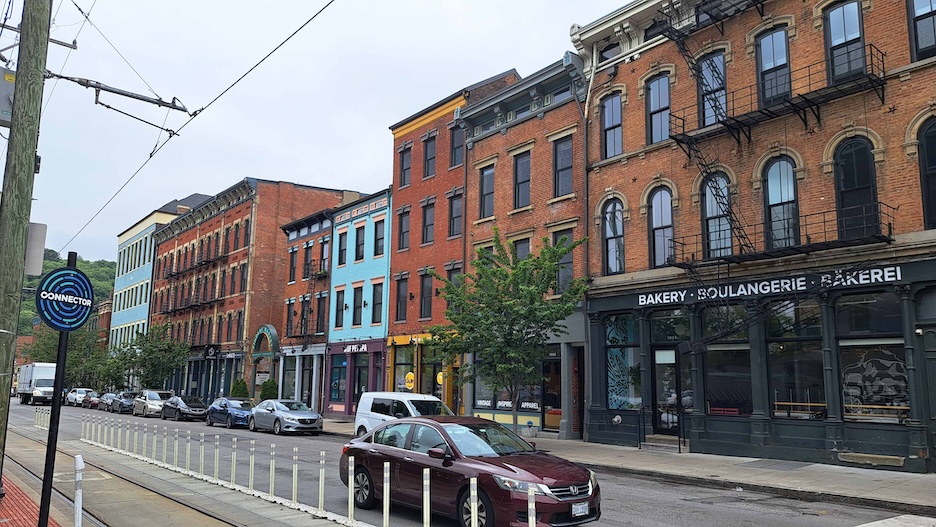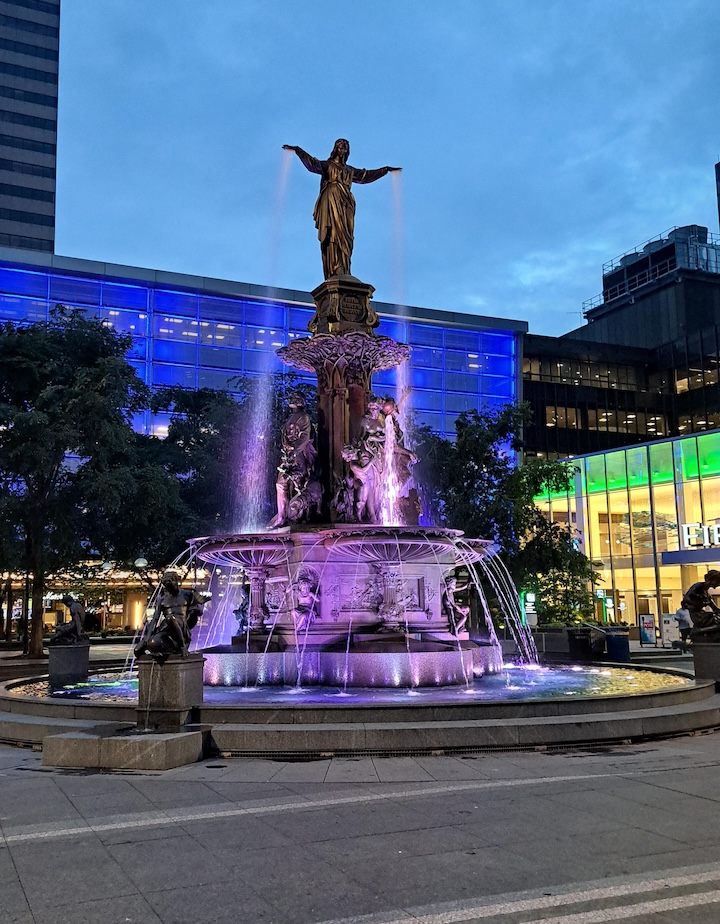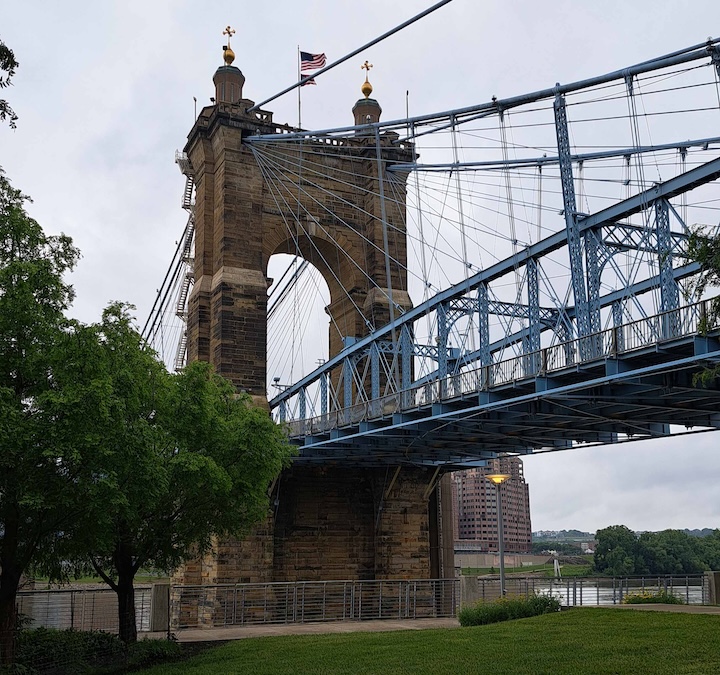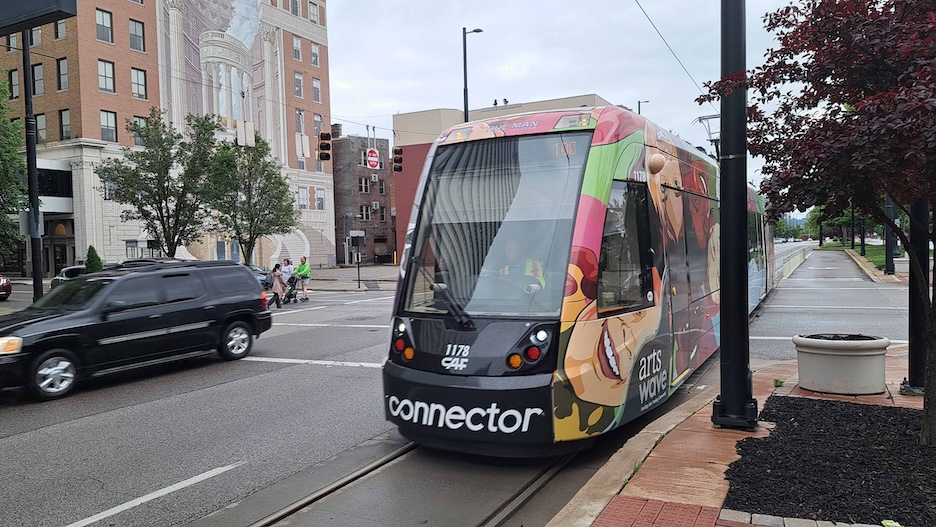Building a Stronger Hamilton: Lessons from the Queen City

Strong Towns conference in Cincinnati – and the city itself – offer plenty of examples of what we can do to build a livable, inviting city for residents and visitors.
Back in May, a group of intrepid Hamiltonians made the trek south of the border to attend the Strong Towns National Gathering in Cincinnati, Ohio. It was an inspiring few days that raised many issues and opportunities relevant to Hamilton. Aside from the conference itself, the city of Cincinnati was a delightful surprise.
First, the Strong Towns gathering. Strong Towns is a non-profit organization that advocates for a change from the North American post-war pattern of development in cities, including unchecked urban sprawl, to a pattern of development that is financially strong and resilient. Strong Towns advocates for cities of all sizes to be safe, livable and inviting.
The organization works to elevate local government to be the highest level of collaboration for people working together in a place, not merely the lowest level in a hierarchy of governments. Strong Towns supports thousands of people across the United States and Canada who are advocating for a radically new way of thinking about the way we build our communities.

The Strong Towns National Gathering brought together people from across North America from a wide variety of backgrounds and professions. Many projects and lessons learned were shared with participants, and a few themes stood out. First was the idea of having a sense of urgency around initiating improvements in communities. No matter what the problem was, big or small, the ethos of "do something now" to make the situation better kept reoccurring. It was described as a four-step approach to public investment:
1. Humbly observe where people in the community struggle.
2. Ask the question: What is the next smallest thing we can do right now to address that struggle?
3. Do that thing. Do it right now.
4. Repeat.
This applies to all segments of the community. If the municipality was taking too long to fix a problem, or undershooting the solution so that the problem wouldn't be fixed, there are a variety of ways residents can demonstrate the value of improvements immediately. Some call it tactical urbanism, others simply apply creative thinking, and a step in the right direction can occur. Once demonstrated, more formalized solutions can be adopted.
Examples of this included making streets safer with temporary design changes or using paint to enlarge spaces for pedestrians. One presentation from a smaller town in western Canada described how they solved an issue of publicly accessible restrooms in their downtown. The initial idea was to spend hundreds of thousands of dollars on new facilities, money the municipality didn't have. Instead, civic leaders simply took a step back, mapped out and extended the hours of existing facilities within easy walking distance, and communicated the options to residents and visitors.
This solved the problem immediately, while also saving the significant expense of building new facilities. It's a small thing, but makes a big difference to the accessibility and enjoyment of a community's downtown.
On a larger scale, there were presentations on how to quantify the impact of urban sprawl and a lack of density. We all know sprawl is expensive, very expensive, but to be able to put a price tag on it, is eye-opening. Once you figure out how much property tax is generated per hectare, you get a much clearer picture of what development is wealth-creating and what development is wealth-draining.
You can then build a stronger town with economic sustainability as a foundation. It just makes sense, but right now we do the opposite and watch our property taxes rise each year as services and infrastructure are not properly invested in. It's time to change our approach.

The Tyler Davidson Fountain or The Genius of Water is regarded as the city's symbol. It was dedicated in 1871 and is the centrepiece of Fountain Square in Cincinnati's downtown. 
The John A. Roebling Suspension Bridge connecting Cincinnati with Covington, Kentucky was the longest suspension bridge in the world when it opened in 1866. It was overtaken in 1883 by the Brooklyn Bridge, also designed by Roebling.
The Queen City
The city of Cincinnati itself holds a number of informative lessons for Hamilton. Located in, coincidentally, Hamilton County, Ohio, the Queen City as it's known, has a population of over 310,000 within a metro area of over 2.2 million. The city has experienced a typical North American cycle of growth, decline and renewal over the years, but as it stands now in 2024, there are a number of urban initiatives worth mentioning.
The waterfront (riverfront) has undergone significant rejuvenation, including an extensive park network, some residential development and sports stadiums for the football and baseball teams. It is a major resident and tourist destination filled with panoramic views of the water and the city.
This was similar to the plan Hamilton had for the new sports stadium for the Pan Am games and the success in Cincinnati gives a glimpse of what could have been on Hamilton's west harbourfront.

Cincinnati also has light-rail transit (LRT). The Connector, as it's called, opened in 2016 and operates on a six-kilometre loop linking the waterfront and downtown, through to the north part of the Over-the-Rhine neighbourhood. Future extensions have been proposed to the Uptown area, home to the University of Cincinnati. During the COVID-19 pandemic, fares were suspended and eventually eliminated. The easy accessibility to multiple business, shopping and residential districts by LRT is something to remember as Hamilton continues on its path to build LRT.

The Over-the-Rhine neighbourhood, a German cultural district, is among the largest, most intact urban historic districts in the United States. Once known as one of the most economically distressed areas in the country, the neighbourhood is undergoing a renewal, with heritage preservation, restoration and public space upgrades evident, including the popular Findley Market. Newer condo and residential development sit alongside historical buildings. It's not one or the other, it's both. Another lesson for Hamilton as we manage our own residential development boom downtown, one that is greater than what is occurring in Cincinnati.
As with many older North American cities, including Hamilton, much of the downtown urban fabric has been eliminated and replaced with surface parking lots. This leaves many large façades of buildings exposed. Cincinnati has used this as a large-scale opportunity for public art. ArtWorks is an award-winning Greater Cincinnati non-profit that creates community-based public art. The organization collaborates with community organizations and residents, businesses, governments, foundations, and non-profits to build creative works of art that bolster the region's global reputation as an arts destination.
Over the past 27 years, ArtWorks has created a city-wide gallery with more than 14,000 public and private art projects, including more than 300 permanent outdoor murals. This makes every turn of a street corner into an opportunity for an awe-inspiring experience. While Hamilton has murals, the program in Cincinnati is next level in terms of size and scale.

Final thoughts
As a first-time visitor to Cincinnati, it was easy to find your way around the central city. Places of interest were well identified, a free LRT was a convenient way to get there, and walking the streets was a pleasure (although they, too, have a problem with one-way streets and too many traffic lanes). What stood out was a city that people cared about. It wasn't perfect, it was a work in progress, but it was clean, inviting, and interesting. It got me thinking about how a first-time visitor to Hamilton in 2024 would react stepping out of a downtown hotel. How would they feel walking our streets, trying to figure out where to go? Would they see a city that was cared for, with streets that were clean and inviting?
As with many things in Hamilton, we have the potential to better reflect our best, both to ourselves and to those visiting our city. And in the spirit of that gathering in Cincinnati back in May, let's get moving on building a stronger Hamilton, right now.
Paul Shaker is a Hamilton-based urban planner and principal with Civicplan.












